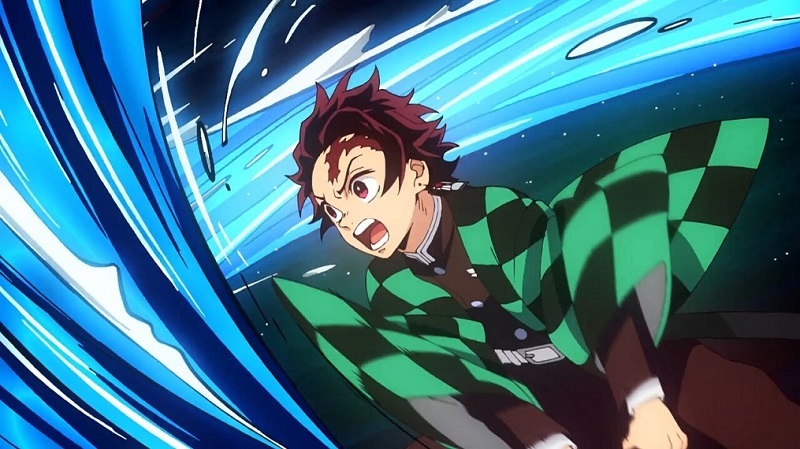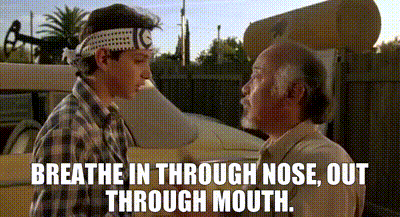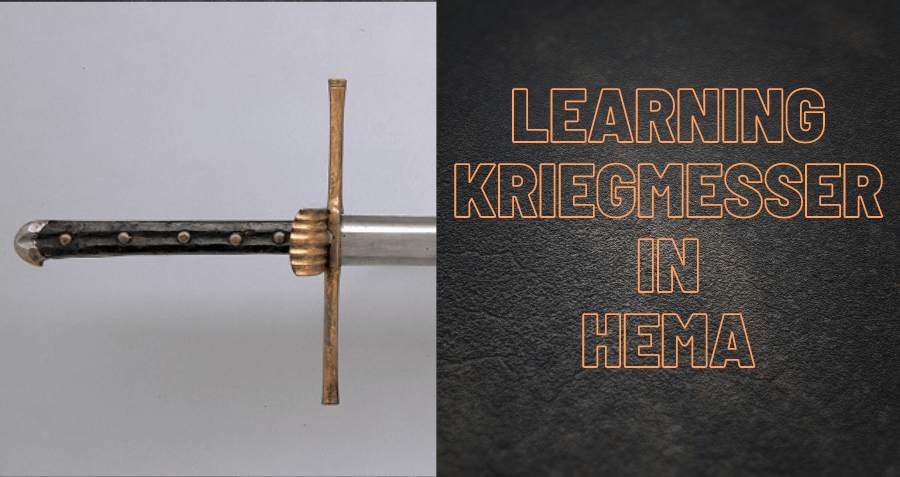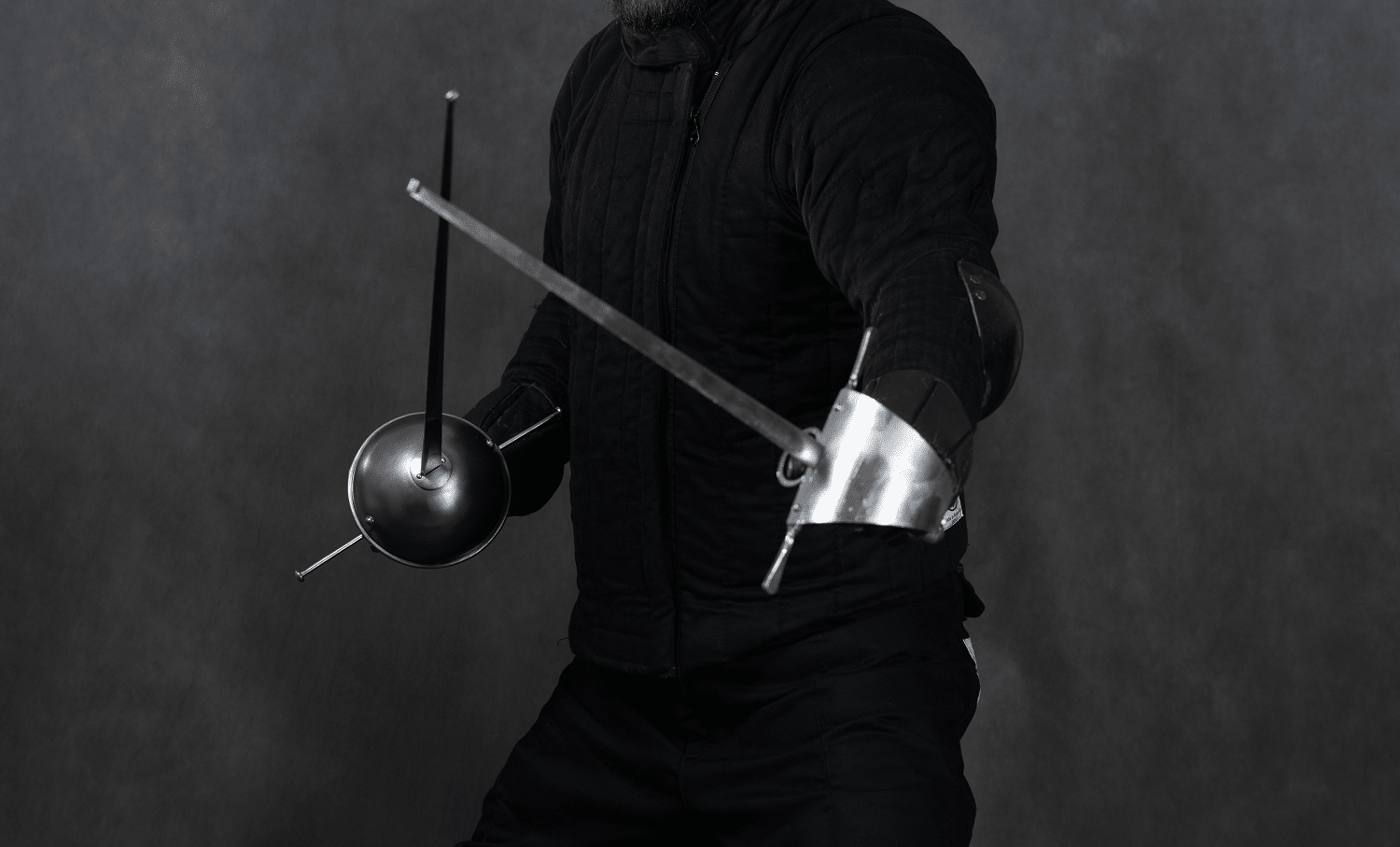Historical swordmanship is a fairly nerdy hobby and sport, with many young people today interested in it as an extension of their interest in popular media such as videogames, television shows and even Japanese anime. So we thought we’d comment a little about a popular show called Demon Slayer: Kimetsu no Yaiba that has some relevance to an important topic — breathing — and in so doing perhaps we’ll introduce some people to real sword fighting.
As with all Japanese animation shonen genre shows, Demon Slayer: Kimetsu no Yaiba is a highly fictionalized story set in a fantasy world where magical powers and creatures exist. As a result very little of what is depicted in the show is based on real swordsmanship.
Sadly, swinging your sword will not summon water dragons IRL
Having said this, there is a specific trait of the sword fighting styles depicted in Demon Slayer: Kimetsu no Yaiba that correlates to real-life sword fighting, and this is emphasized in the usage of breathing patterns by the sword fighters.
Within the fantasy world of Demon Slayer: Kimetsu no Yaiba the protagonist Tanjiro and other Demon Slayer Corps fighters are able to execute super powerful magical sword techniques by mastering special “Breathing Styles” patterns, and these techniques of breathing are said to also enhance the strength and endurance of their physical bodies, too. While this depiction in the show is purely an exaggerated fantasy, the idea that breath control is important in sword based martial arts does have a basis in reality.
It is fairly well known that many martial arts utilize special breath related techniques, everything from boxers breathing out quickly as they jab to karate “kiap” spirit shouts during strikes with the hands and feet. Kendo practitioners even do a spirited shout when they attack. Quigong (chi kung) exercises in Chinese Taoist (Daoism) martial arts such as Tai Chi Chuan also place a great deal of emphasis on special breathing patterns and visualization exercises designed to improve the mind-body connection. The importance of proper breathing for martial arts is even specifically mentioned in films such as The Karate Kid (1984),
Likewise, breathing matters within historical European martial arts fencing as well.
The science behind breathing is well understood and there is a scientifically proven best way to breath for different types of activities. As these methods and the specific reasons why they are optimal is a very lengthy topic to discuss in detail and best explained visually, we suggest watching the following video for more information on these specifics.
Respiration and athletic performance
Quality breathing allows you to sustain athletic activity for longer duration of time, becoming exhausted less quickly. This is important for lunges, as repeated lunges will quickly tire one out unless you have excellent breath control.
Many of these breathing techniques used in sports, and martial arts, are designed to assist with the Aerobic and Anaerobic respiration process.
Breathing also helps with what is called mindfulness. For a non-woo approach to the benefits of breathing for mindfulness, you can read this excellent article by Stuart McDonald, another HEMA practitioner.
Breathing properly for sword martial arts
As with any martial art the muscles of your body should be relaxed, but ready to spring into action. You don’t want to be tensing up too tightly and exerting too much wasted energy as you move. The body should be in a state of readiness and at the moment of action then breath out as you strike. The action of timing the exhale of your breath with a strike allows for you to inhale on your recovery of your movements, which is a very natural and efficient way of breathing during high intensity physical activities. Breathing out as you strike and breathing in on your recovery allows for your muscles to get better oxygenated during high tension activity such as fighting, and proper flow of oxygen to your muscles is needed to prevent your muscles from becoming exhausted too quickly.
Breathing properly is such an important skill for sword fighting that Guy Windsor actually has an online course about breathing.
Of course other resources exist for learning breathing exercises as well. It is a fairly popular topic among Kendo practitioners, usually taught as part of meditation.
So while you may not be able to fly around the room like Tanjiro in Demon Slayer: Kimetsu no Yaiba while Water Breathing and summoning tidal waves with every swing of your sword blade, learning to breath properly will improve your athletic performance during freeplay sword fighting battles in Historical European martial arts.
****
If you’d like to learn more information about historical fencing practices please check out our Learn HEMA page for a guide to learning about the historical weapon that interests you. You can also find more guides we’ve written about other topics at our Helpful Guides page.
Related posts:
- How to Clean and Care for Your swords and Federschwert in HEMA (Plus Storage and Transport Advice)
- Modern Olympic Fencing Vs HEMA: What Are the Differences?
- Our Favorite Historical European Martial Arts reddit post threads
- Important Safety Tips for Historical European Martial Arts Fencing with Swords


















